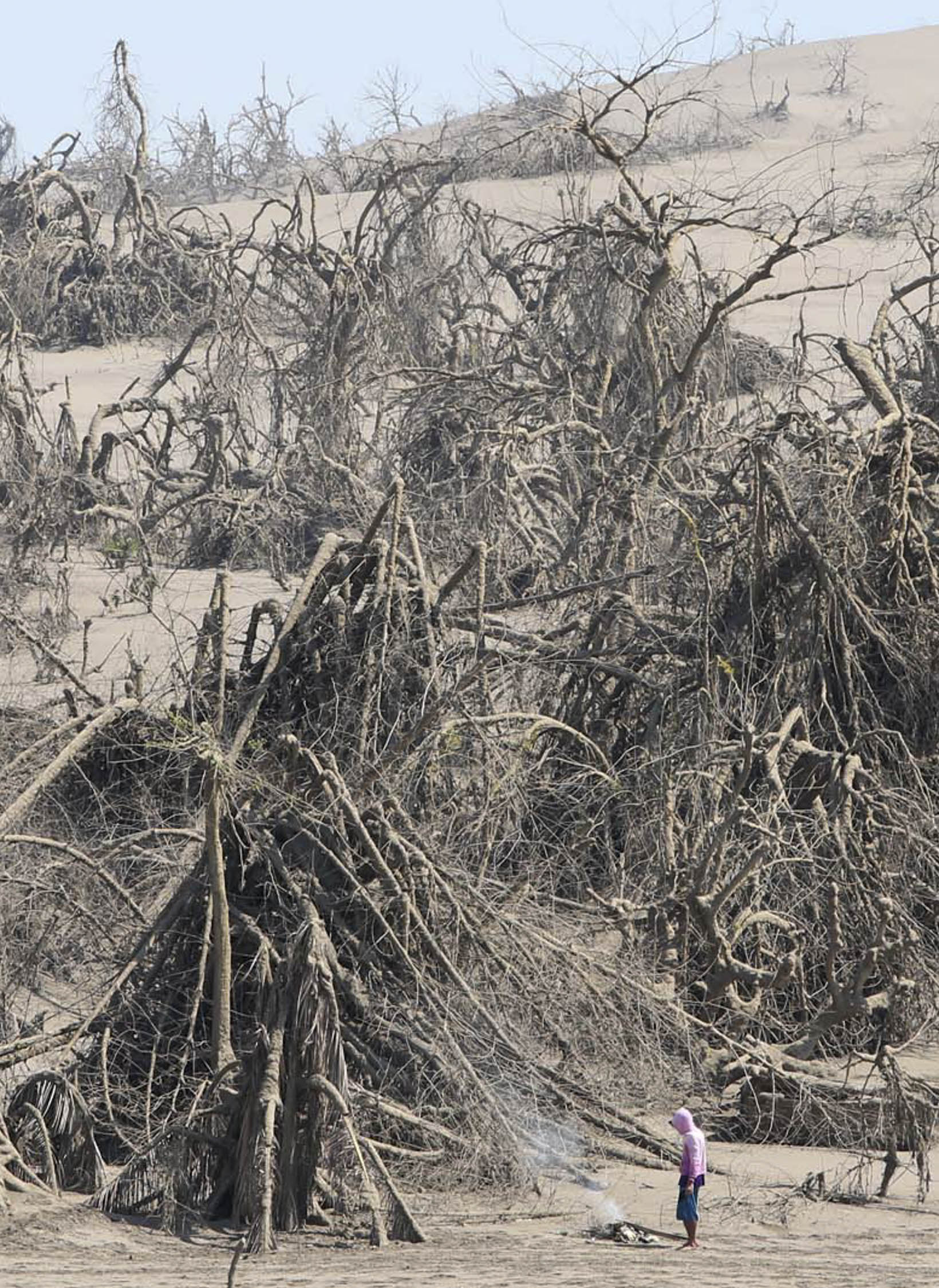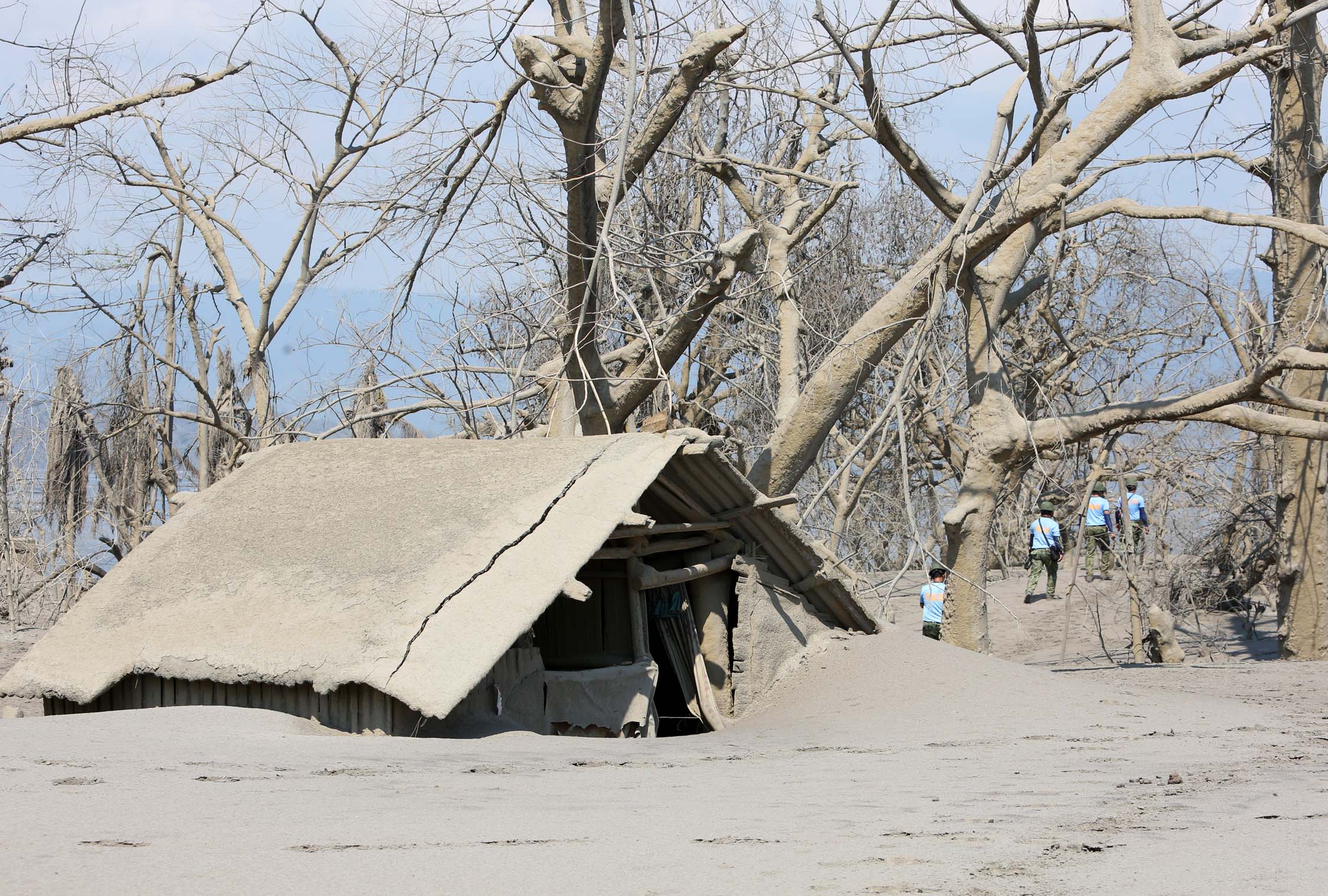Residents: What to do with tons of Taal ash

VOLCANIC DEPOSITS Thick ash blankets the entire communities on the Taal volcano island, now declared a permanent lockdown, or no man’s land by the city government after it’s eruption on Jan. 12 MARIANNE BERMUDEZ
SAN PEDRO CITY—The Department of Public Works and Highways (DPWH) is testing the quality of materials contained in the tons of ash from the Taal Volcano eruption for possible use as construction material or road fillers.
Batangas Gov. Hermilando Mandanas earlier said at least 30 million tons of the volcanic ash, spewed by the volcano during its Jan. 12 phreatic (steam-driven) eruption, had covered several lakeshore towns in the province.
As of Tuesday, Joel Limpengco, head of the DPWH Batangas first district engineering office, said the agency’s personnel had cleared most of the major roads, specifically in the hardest-hit towns of Lemery, Taal and parts of Agoncillo.
In Lipa City, district engineer Rody Angulo said the DPWH had already cleared roads, although these were less affected by the ashfall.
DPWH vehicles and heavy equipment have been helping affected communities, initially during evacuation and later on clearing the ash that made roads in the province either slippery when wet or dusty when dry.
The local government of Biñan in Laguna province put to good use the volcanic ash that blanketed parts of the city by turning it into bricks.
Roman Carencia, Biñan information officer, said the city would initially use the ash bricks as road pavements for public schools.“Our quality control and assurance [division] is testing the material of the ash now if we could use it as ‘panambak’ (filler),” Limpengco said.
“The ash itself is powdery but maybe we can use it when mixed with a little cement,” he added.

PNP maritime are tasked to remind residents of the Taal volcano island to stay away although some have returned to collect some of their surviving belongings in the island, now declared a permanent lockdown, or no man’s land by the city government after it’s eruption last week displacing over 380,000 people. MARIANNE BERMUDEZ
Fissures
Aside from the ashfall, the eruption, caused by the underground movement of magma, triggered a series of tremors that left cracks on structures and road fissures.
Limpengco said initial inspection after Taal’s alert level was downgraded from 4 to 3 on Sunday showed a “more than 3-kilometer” fissure that cut across Agoncillo and Lemery.
“[The fissure] appeared to have started from the mountain, down to [communities] and toward the Taal Lake,” he said. Fissures were also seen along Diokno Highway, which connects Laurel and Agoncillo, while minor cracks were observed on Calbangan Bridge in Lemery.
These roads were passable only to light vehicles, the DPWH said.
Temporary solution
In San Nicolas town, Mayor Lester de Sagun said cracks were found in more than 100 houses and school buildings.
“We cannot keep people from coming home [in damaged houses], but [they should do so] at their own risk. Right now, structural engineers are still inspecting the integrity [of school buildings],” he said.
The DPWH has filled up road fissures with soil so as not to delay the movement of relief goods, rescue vehicles and residents returning to their communities.
Malacañang said the national government would help Batangas ensure the safety of former residents of Taal Volcano Island.
RelocationResidents can no longer go back and live on the island, as it is now a permanent danger zone. “President Duterte’s directive is always to secure their safety. So necessarily, all the appropriate agencies will respond to the directive,” presidential spokesperson Salvador Panelo said.
Panelo said Mr. Duterte was willing to pour in more funds for the relocation of the families who used to live on the island.“But this is just temporary. We’ll still have to assess [the status] and later repair the roads but we’ll have to ask budget for that,” he said.